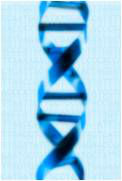Supreme Court Patent Decision on Human Genes Has Constitutional Roots

While it might seem strange to discuss the patentability of DNA on a constitutional law blog, the U.S. Supreme Court’s decision in Association for Molecular Pathology v. Myriad Genetics, Inc. can be traced back to the founding fathers. While they likely could not have anticipated the advances inventors would make in mapping our genetic makeup, they did believe in promoting American innovation.
Article 1, Section 8, Clause 8, referred to as the Patent and Copyright Clause, authorized Congress “To promote the Progress of Science and useful Arts, by securing for limited Times to Authors and Inventors the exclusive Right to their respective Writings and Discoveries.” Under this mandate, Congress created the U.S. patent system for “new and useful” inventions.
While the Supreme Court’s Myriad decision largely focused on the language of 35 U. S C. § 101 regarding patent eligibility, several amicus briefs arguing against the gene patents referenced the constitutional foundation of the patent system. As highlighted by the American Bar Association:
The drafters of the Constitution sought to give Congress the power to promote the widespread distribution of knowledge in the most effective way possible. The U.S. Constitution, Article I, Section 8, Clause 8, grants Congress the power to provide inventors time-limited exclusive rights over their inventions in order ‘to promote the progress of Science and the useful Arts.’ However, patents for human genetic material directly threaten that idea, essentially blocking future research and development and stopping science in its tracks.
Ultimately, the Supreme Court largely agreed. It found that a naturally occurring DNA segment is a product of nature and not patent eligible merely because it has been isolated. Conversely, cDNA is patent eligible because it is not naturally occurring. As further explained by the Court, “Myriad did not create or alter either the genetic information encoded in the BCRA1 and BCRA2 genes or the genetic structure of the DNA. It found an important and useful gene, but groundbreaking, innovative, or even brilliant discovery does not by itself satisfy the § 101 inquiry.”
Previous Articles
SCOTUS Takes Up Key Election Case Involving Mail-In Ballots
by DONALD SCARINCI on December 17, 2025
The U.S. Supreme Court recently granted certiorari in a key election case, Watson v. Republican Nat...
SCOTUS Adds Second Amendment Case to Docket
by DONALD SCARINCI on November 27, 2025
The U.S. Supreme Court will consider another important Second Amendment case this term. The latest ...
Key Takeaways from Oral Arguments in Court’s Controversial Voting-Rights Case
by DONALD SCARINCI on November 12, 2025
The U.S. Supreme Court recently heard oral arguments in Louisiana v. Callais, which involves a key ...
The Amendments
-
Amendment1
- Establishment ClauseFree Exercise Clause
- Freedom of Speech
- Freedoms of Press
- Freedom of Assembly, and Petitition
-
Amendment2
- The Right to Bear Arms
-
Amendment4
- Unreasonable Searches and Seizures
-
Amendment5
- Due Process
- Eminent Domain
- Rights of Criminal Defendants
Preamble to the Bill of Rights
Congress of the United States begun and held at the City of New-York, on Wednesday the fourth of March, one thousand seven hundred and eighty nine.
THE Conventions of a number of the States, having at the time of their adopting the Constitution, expressed a desire, in order to prevent misconstruction or abuse of its powers, that further declaratory and restrictive clauses should be added: And as extending the ground of public confidence in the Government, will best ensure the beneficent ends of its institution.





